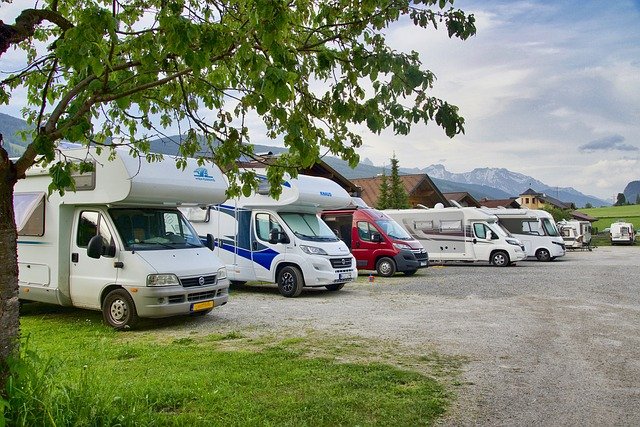Electric RVs and Campers: A Guide to Modern Recreational Vehicles
Electric recreational vehicles (RVs) and campers are gaining popularity as eco-friendly alternatives to traditional gas-powered models. These innovative vehicles combine the comfort of mobile living with the benefits of electric propulsion, offering a unique blend of sustainability and convenience for outdoor enthusiasts. As the automotive industry shifts towards electrification, RV manufacturers are adapting to meet the growing demand for cleaner, more efficient travel options.

What are the advantages of electric RVs and campers?
Electric RVs and campers offer several benefits over their conventional counterparts. First and foremost, they produce zero direct emissions, contributing to cleaner air and reduced environmental impact. This makes them ideal for nature lovers who want to minimize their carbon footprint while exploring the great outdoors. Additionally, electric RVs typically have lower operating costs due to the cheaper price of electricity compared to gasoline or diesel fuel. The quieter operation of electric motors also enhances the camping experience, allowing travelers to enjoy the sounds of nature without engine noise.
How do electric RVs compare to traditional models in terms of comfort?
When it comes to comfort, electric RVs are designed to provide a superior experience. Many models feature advanced climate control systems that can be powered by the vehicle’s battery pack, ensuring a comfortable interior temperature without the need for a running engine. The absence of a combustion engine also means less vibration and noise, creating a more peaceful living environment. Electric RVs often incorporate smart home technologies, allowing users to control various functions through mobile apps or voice commands, further enhancing the convenience and comfort of life on the road.
What amenities can you expect in an electric RV bathroom?
Electric RVs equipped with bathrooms offer a range of amenities that rival those found in traditional models. These compact yet functional spaces typically include a toilet, sink, and shower, all designed to maximize space efficiency. Some high-end electric RVs feature innovative bathroom designs with smart toilets that conserve water, LED-lit mirrors with touch controls, and compact washer-dryer combinations. The use of lightweight materials and clever storage solutions helps maintain the vehicle’s efficiency while providing all the necessary comforts for extended trips.
Which electric RV models are currently trending?
Several electric RV models have been garnering attention in the market. The Winnebago e-RV concept, based on the Ford Transit platform, has generated significant interest with its all-electric powertrain and range of up to 125 miles. Another notable model is the Thor Vision Vehicle, which combines an electric drivetrain with a fuel cell range extender, promising extended travel capabilities. The Airstream eStream concept, an electric travel trailer that can move under its own power, has also captured the imagination of RV enthusiasts with its innovative approach to towing and energy management.
How are manufacturers addressing range concerns in electric RVs?
Range anxiety is a common concern for potential electric RV buyers. Manufacturers are addressing this issue through various approaches. Some are focusing on improving battery technology to increase energy density and overall range. Others are exploring hybrid solutions that combine electric motors with range extenders, such as small generators or hydrogen fuel cells. Additionally, companies are working on developing more efficient charging infrastructure specifically designed for RVs, including high-power charging stations at campgrounds and along popular travel routes.
What are the cost considerations for electric RVs and campers?
When considering an electric RV or camper, it’s important to understand the cost implications. While the initial purchase price of electric RVs is generally higher than traditional models, the long-term operating costs can be significantly lower. Here’s a comparison of some current electric and traditional RV options:
| RV Model | Type | Estimated Base Price | Estimated Range |
|---|---|---|---|
| Winnebago e-RV (concept) | Electric | $125,000 - $150,000 | 125 miles |
| Thor Vision Vehicle (concept) | Electric with fuel cell | Not yet available | 300+ miles |
| Airstream eStream (concept) | Electric trailer | Not yet available | Varies |
| Winnebago Vista (gas) | Traditional Class A | $130,000 - $150,000 | 300-400 miles |
| Thor A.C.E (gas) | Traditional Class A | $115,000 - $135,000 | 300-400 miles |
Prices, rates, or cost estimates mentioned in this article are based on the latest available information but may change over time. Independent research is advised before making financial decisions.
While the upfront costs of electric RVs may be higher, potential savings on fuel and maintenance over time could offset this initial investment. Additionally, as technology improves and production scales up, prices for electric RVs are expected to become more competitive with traditional models.
In conclusion, electric RVs and campers represent an exciting development in the world of recreational vehicles. They offer a compelling combination of eco-friendliness, comfort, and technological innovation. As the technology continues to evolve and more models enter the market, electric RVs are poised to play an increasingly important role in the future of outdoor adventures and sustainable travel.




